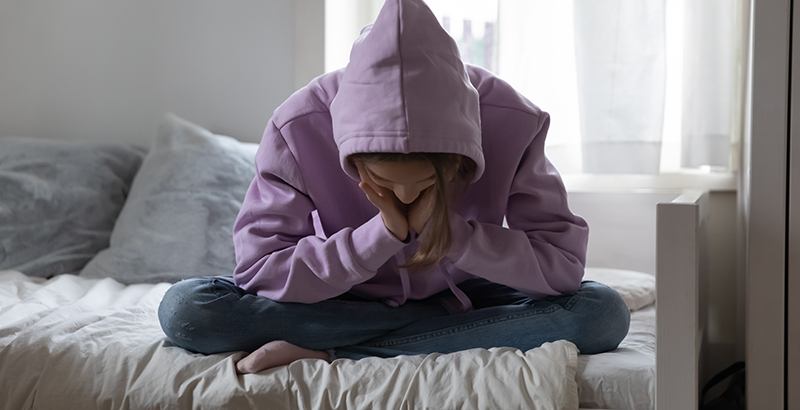Singer: Educators and School Staff Are on the Front Lines of Suicide Prevention. Here’s How to Help Students in Distress

When it comes to suicide prevention, school mental health professionals, teachers and staff are in a unique position to identify the warning signs from students who may want to harm themselves or others.
These signs can range from withdrawal from normal activities and sudden behavioral changes to explicit statements that they are thinking of taking their own life. Educators have a unique perspective and can compare one student’s behavior with that of others in the same age range and in the same environment. So while adults often miss warning signs, a teacher could be the first to notice that a student has become more angry or aggressive than his peers, or withdraws from classroom activities she normally enjoys.
Experienced educators have spent years in the classroom learning how to identify which students are doing well and which are struggling. But virtual learning and hybrid models have made it harder to use that expertise. In some cases, remote learning has flipped everything around — some students who struggled at school are thriving online at home, while others who loved the energy of school are now disconnected and having trouble.
Imagine the transgender student who had been at increased risk because of bullying and abuse in school. Since remote learning, they are home with a supportive family who uses their correct name and pronouns. They are thriving in the environment, and their risk has been reduced. Meanwhile, a star student who always volunteered for activities and was socially engaged in school may be at higher risk because the activities that boosted self-worth and acceptance are no longer available.
Then there are students for whom school was a safe place, away from abuse or neglect at home. With virtual learning, they may be stuck at home with their abuser and see suicide as their only escape.
Looking for the warning signs is more important than ever. National suicide rates were already on the rise before the pandemic, and students across the country are reporting more emotional distress. That’s why it’s so important for teachers to get to know their students.
When Sandy Hook Promise asked me to join a team of experts to develop the “Say Something: Prevent Suicide” course, a free 20-minute video training for educators, we focused on the top five actions students and adults can take when confronted by warning signs of students who outright state they want to kill themselves:
- Take a deep breath, be calm.
- Listen. Don’t talk through the silence.
- Ask directly, and without judgment: “Are you thinking about suicide?” You are not going to put the idea in their head.
- Use the most accurate language possible to reduce ambiguity. Don’t ask, “Are you thinking of hurting yourself?” Instead, ask, “Are you thinking about killing yourself?”
- Don’t leave them alone. Get help immediately.
Given the current environment, it is essential that school personnel contact parents upon finding out about a student’s suicide risk and involve them in assessment and planning for next steps. It can be devastating for parents to learn that their child is suicidal, but parents know their children best.
It goes without saying that this is not an easy task. Educators are already overwhelmed trying to teach in-person classes with new restrictions, virtual classes or hybrid models. That’s why no-cost programs like Prevent Suicide include resources and training materials specifically designed for educators, parents and students. And keep these numbers handy: National Suicide Hotline, (800) 273-TALK (8255) or text 741741; Crisis Text Line: 741741.
If you see something, say something. You just might be saving a life.
Jonathan Singer, Ph.D., LCSW is the president of the American Association of Suicidology. Currently working with Loyola University Chicago, he is an expert in suicide intervention, cyberbullying, family-based interventions and school social work, and is the founder and host of “The Social Work Podcast.”
Get stories like these delivered straight to your inbox. Sign up for The 74 Newsletter

;)